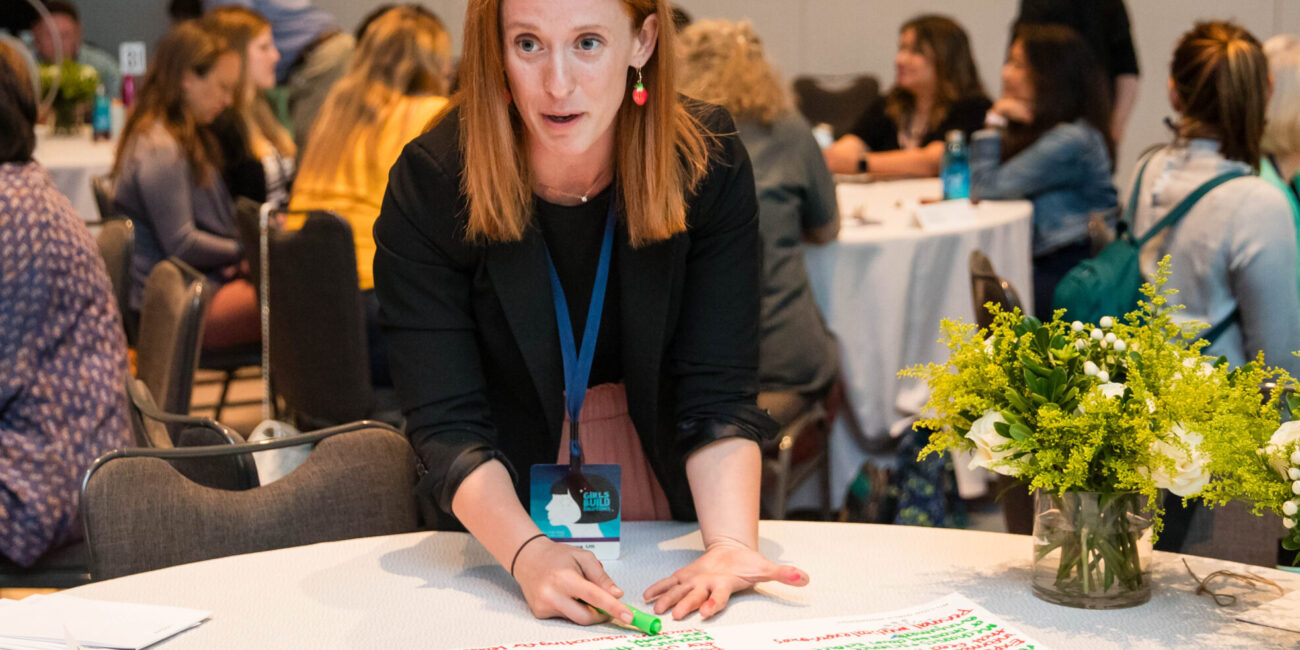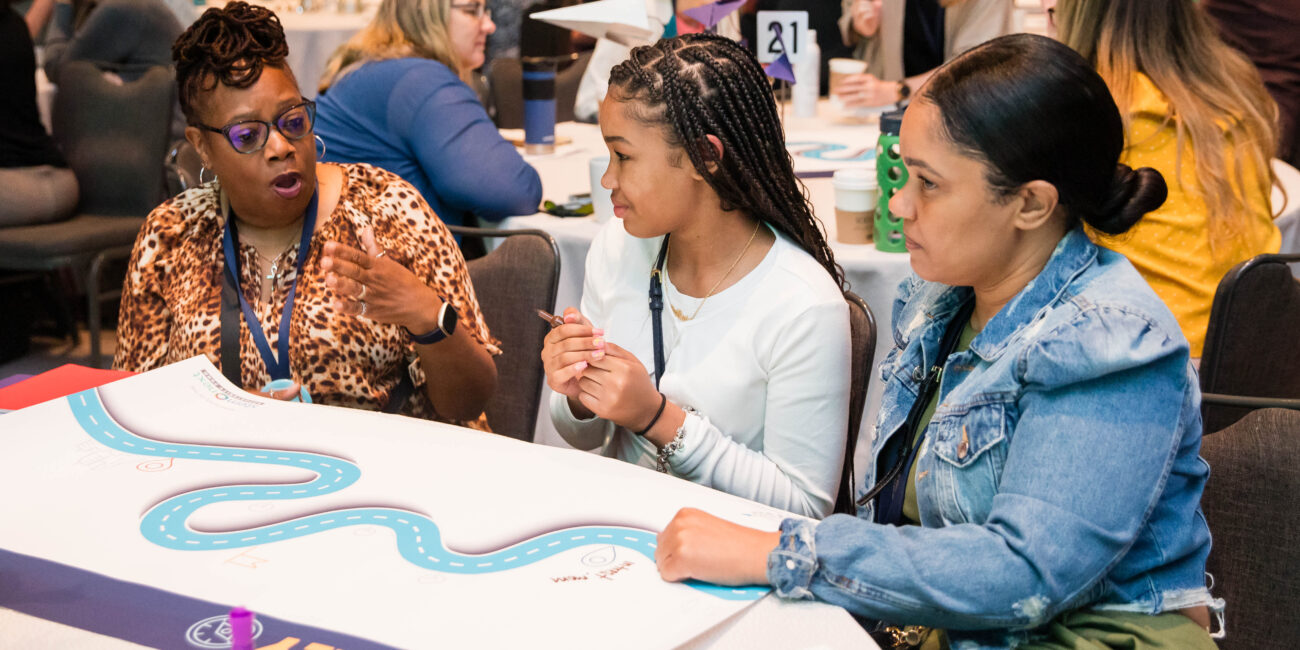Making Connections to Support STEM Transitions

Strategy 6
Building relationships with families and youth to pursue immersive STEM opportunities
Making Connections, aims to understand and support transitions and handoffs that remove barriers and connect youth to STEM learning opportunities.
Understanding how to make connections across settings in systematic ways can support the study of, replication, and scaling of strategies for making connections across settings in out-of-school STEM learning.
Strategy 6: Building relationships with families and youth to get buy-in for pursuing immersive STEM opportunities
Strategy 6 is about the intentional work supportive adults do to get family and youth buy-in for STEM learning opportunities to make them more comfortable and enthusiastic about youth participating in STEM programs.
Why would you use this strategy?
This strategy inspires and engages youth and their families as it creates opportunities for youth to have access to immersive STEM events and experiences (e.g., Space Camp, STEM internships).
Who would use this strategy?
Networks and programs that need to deepen family investment and engagement in STEM opportunities and those who see families as partners in their children’s education.
“The parents are invested, we have really good relationships. They want good things for their kids. STEM camps are a big thing, and I know that a lot of our families, that’s not something that you can just shell out money for. And they really want their kids to have that opportunity, and so they’re willing to get them here or find a way to get them here most days. And (students) look for someone to treat them like an equal…so speaking to them about what they want is really important, giving them space to express who they are.”
-Taylor, Woodland Forrest
Target Outcomes
- Youth, families, and program leaders are on the same page, feel connected and committed to supporting youths' STEM interests toward future opportunities.
- Opportunity structures within the program design support alumni youth in becoming STEM mentors.
- Continuous quality improvement for STEM offerings that connect to youth and family interests.
Important Considerations
- Labeling a program as "STEM" can be intimidating and act as a barrier to entry - consider how to market a program to youth and family interests.
- If youth are attending an immersive experience that requires time away from home, they may be nervous or unsure of being away. If they have not been away on their own before, they may need support with borrowing/buying luggage and packing.

Design Considerations at the Network Level
- Build program leaders' networks and capacity by connecting programs to grant and leadership opportunities.
- Networks can connect program leaders to one another through communities of practice (CoP) engaged in similar work on engaging youth and families in STEM.

Design Considerations at the Program Level
- Program leaders should build on the strengths of the afterschool space to engage in face-to-face conversations with families when possible.
- Program leaders should approach relationship building with an eye toward shared humanity, yet acknowledge difference in experiences.
- STEM opportunities should be presented in ways that respond to youth and family needs (e.g., working around logistics of transportation or resouce availbility) and connect to broader interests of youth and families (e.g., leadership development, collaboration and teamwork).
- Thoughtful and systematic ways to build family relationships are built into practice (e.g., sharing a personal point of contact, writing specific points of feedback on progress reports, offering alternative ways to participate remotely).
- Making intentional and positive connections with youth and their families, especially after more difficult days.
- Seek constant improvement by building on strengths of networks to learn new systems and improve existing ones.
Case Study: “Here’s How I Write Them, Here’s Why I Do It.” Working Toward Systematizing the Brokering of Relationships at Woodland Forrest in ALACN
Brokering Relationships with Youth and Families to Make Connections to Immersive STEM Opportunities
In addition to supporting interest development, relationships that teachers broker with youth and families can connect youth to community resources for learning. Educators can also encourage family members to work alongside youth as learners and coaches and connect youths’ current educational experiences to family histories.
The Project IMPACT program runs on Tuesdays and Wednesdays from 3:30-5pm. A typical day in the program includes the girls first getting a snack and engaging in a “sisterhood activity” (i.e., a bonding activity) and then open sharing about anything from their day and/or weekend. At around 3:45 they begin delving into the day’s activity and problem (e.g., environmental impact, deforestation) they are going to address that day.
Rooted in a sense of shared humanity and connection, Project IMPACT’s approach to relationship building with families is thoughtful and systematic. They host in-person family night’s that include stations from industry partners and engineering groups. Project IMPACT staff develop positive connections with students and their families to further relationships.
Connections between and across STEM learning settings and experiences can promise to foster meaningful, lifelong STEM learning for youth, yet the detailed and concrete mechanisms for how this learning is connected remains unclear. Little is known about how STEM learning is connected in systematic and sustainable ways.
Making Connections, aims to understand and support transitions and handoffs that remove barriers for youth by connecting STEM learning across ages and settings, ensuring youth interest and motivation persists.
These products are based on research conducted through a collaboration between the Connected Learning Lab at University of California Irvine and STEM Next and their regional partners. It was made possible thanks to the generous support of The Gordon and Betty Moore Foundation and Samueli Foundation.
Strategy six is is one of eight still-evolving strategies, for coordinating and brokering connections across settings in STEM ecosystems. These are intended to serve as tools for making connections across settings to support STEM transitions and unlock academic, workforce-related, and civic opportunities for all youth, especially underrepresented groups like girls, youth of color, and youth from low-income families.





